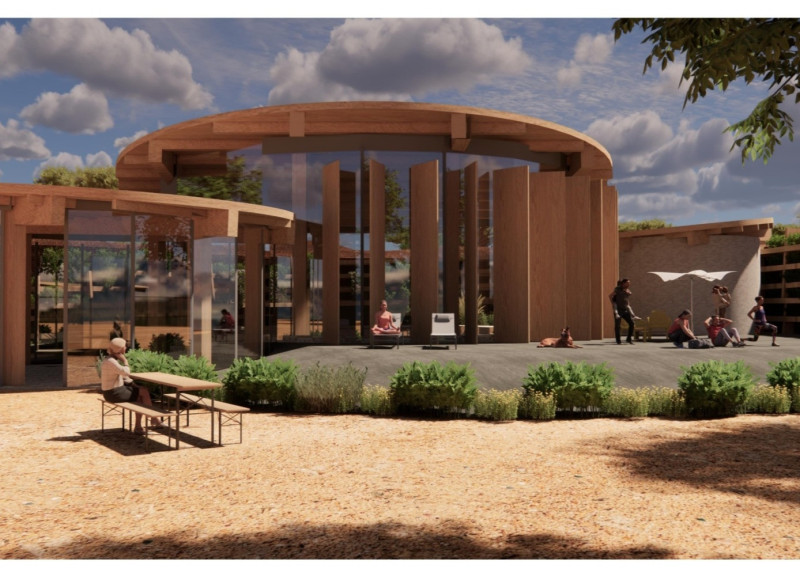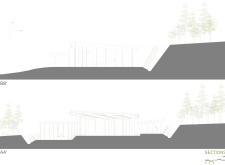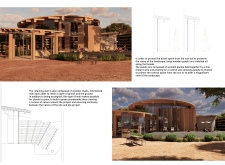5 key facts about this project
At its core, the project serves multiple functions, including event space, a communal kitchen, and bathroom facilities, all connected through a gently sloping access ramp. This configuration not only enhances accessibility but also fosters an inviting atmosphere that encourages social engagement. The spiral motif is a metaphor for growth and unity, reflecting the project’s aspiration to cultivate a sense of belonging among its users.
The architectural design is inherently adaptive, allowing for diverse community activities and gatherings. By providing flexible spaces that can host a variety of events, TresSpirala addresses the dynamic needs of the community it serves. This adaptability is a critical feature of the design, allowing it to evolve over time in response to the changing needs of its users.
Materiality plays a central role in the TresSpirala project. The design incorporates locally sourced wood as the primary building material, promoting sustainable practices and reducing the project’s carbon footprint. The warm, natural qualities of wood also contribute to the overall aesthetic, creating a welcoming environment. Complementing the wooden structure, metal framing is utilized for window installations, ensuring durability while providing an appealing contrast to the softer wood. Large bay windows are strategically placed to optimize natural light penetration, fostering a connection between indoor and outdoor spaces and enhancing the overall user experience.
An innovative aspect of the design is the use of a unique retaining wall system made from interlocking wooden cleats. This approach not only adds structural integrity but also integrates the project with its landscape, supporting plant growth and promoting biodiversity. The combination of these materials and design choices results in an environment that feels both functional and organic, creating a seamless transition between the architecture and its natural setting.
The circular layout of TresSpirala reshapes traditional notions of architectural hierarchy. By minimizing visual barriers and fostering open sightlines, the design emphasizes the importance of community interaction. The result is a space that encourages informal gatherings and social connections, fostering a sense of ownership among users. This thoughtful design approach enhances the project’s identity as a community hub, promoting inclusivity and accessibility.
The project’s landscaping features echo its architectural intent, with pathways and green spaces enhancing the overall aesthetic appeal. The integration of nature within the architectural framework promotes environmental sustainability while creating a serene environment for users to enjoy.
TresSpirala represents a well-rounded architectural design that prioritizes community needs and environmental considerations. The balance of form and function reflects an understanding of contemporary architectural challenges while addressing specific local requirements. As you explore the presentation of this project, you will uncover detailed architectural plans, sections, and unique design ideas that provide further insight into the thoughtful design strategies employed.
For those interested in architectural designs that foster community, TresSpirala serves as a relevant case study, highlighting the significance of sustainable practices and social engagement in modern architecture. Exploring further will offer you a comprehensive view of how architecture can effectively respond to the complexities of community and environment.


























